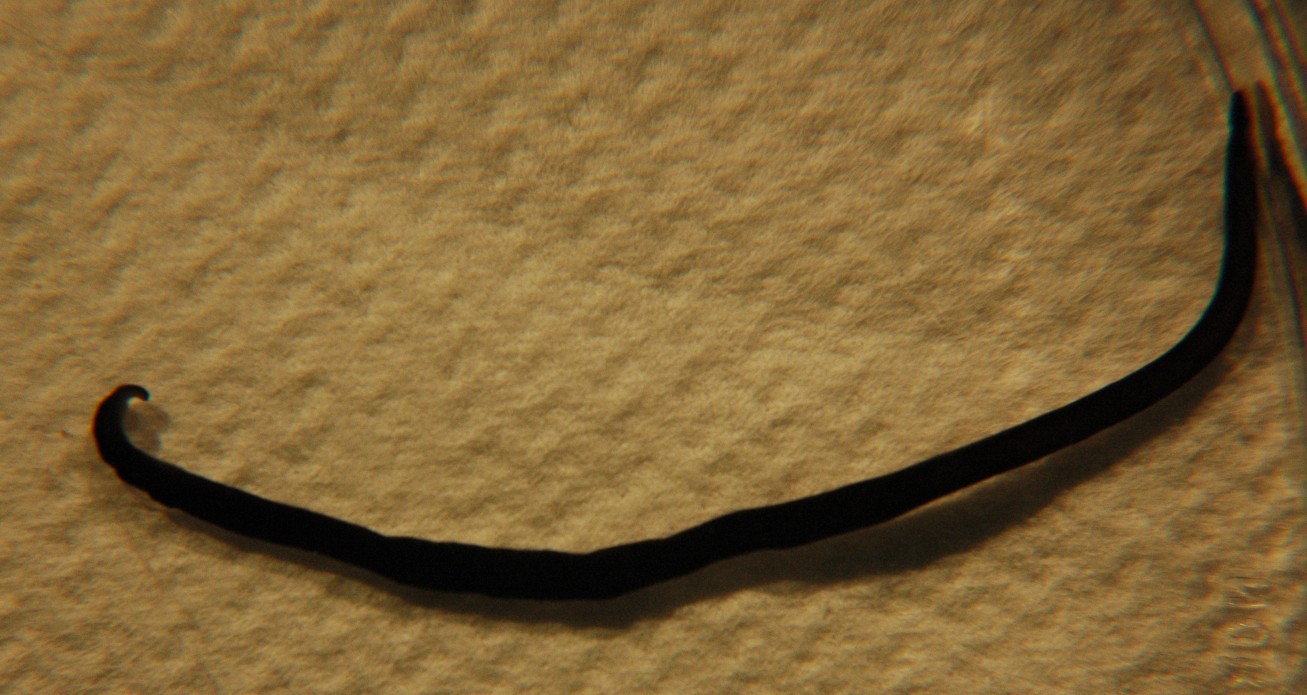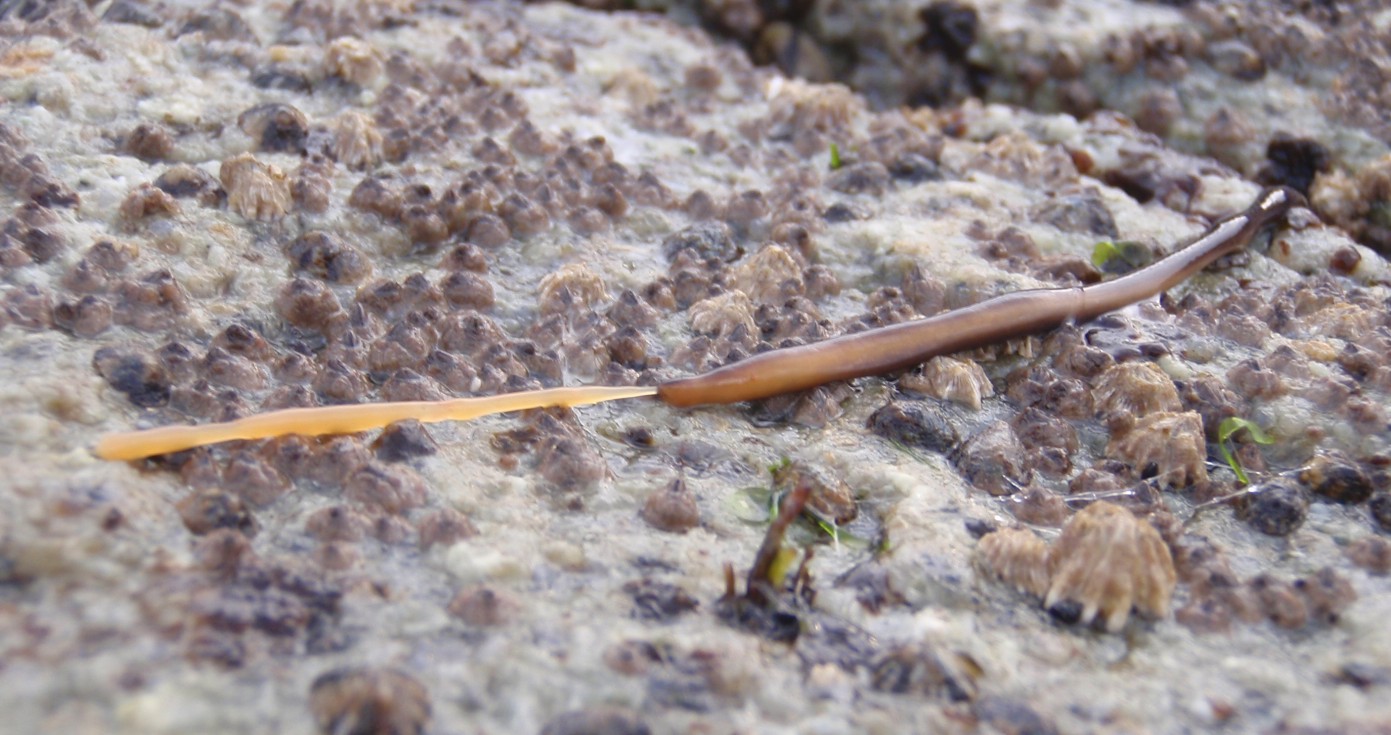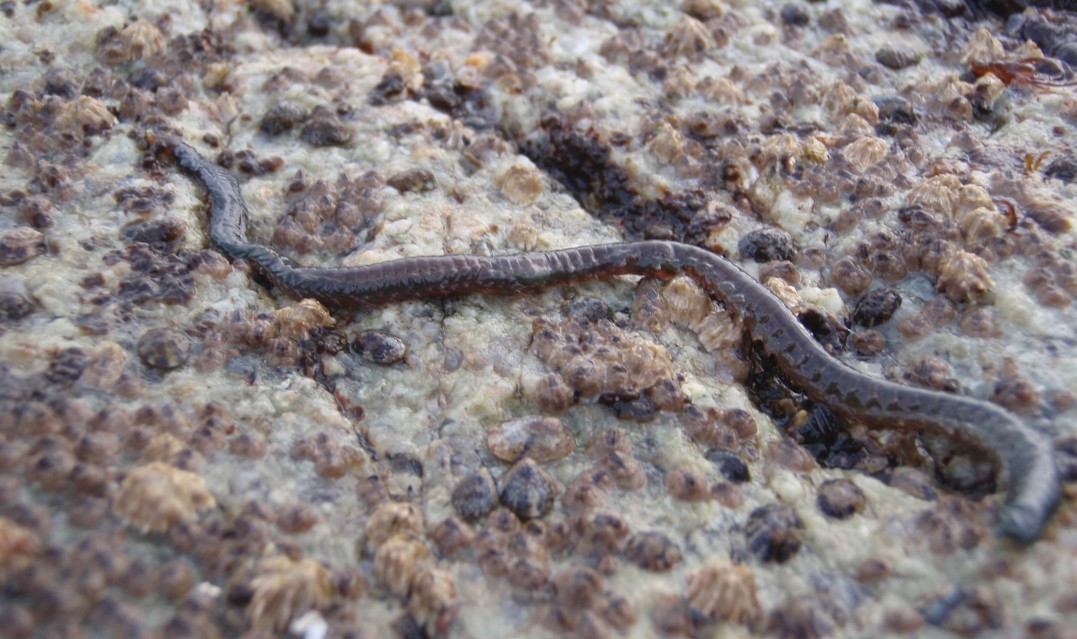Note: Coe (2005) described two morphological types, one of which has strong spiral fluting on its stylets and is brownish dorsally, the other of which has little if any spiral fluting on the stylets and is more purple dorsally.
How to Distinguish from Similar Species: Emplectonema purpuratum may also be purple or brownish-purple but it is much longer and often has light brown specks. Paranemertes sanjuanensis is similar in structure but is colored pale orange to flesh color.
Geographical Range: Japan; Kamchatka; Aleutian Islands, Alaska to Ensenada, Baja California, Mexico
Depth Range: Mid and low intertidal; shallow subtidal
Habitat: Under rocks and under algae on wave-swept shores; or in the Pacific Northwest most commonly within or on muddy sediments or under stones in quieter environments.
Biology/Natural History: This common species feeds on polychaetes, especially nereids, at low tide. At high tide it remains mostly under cover but it is often seen crawling along rocks or mud, hunting during early-morning or nighttime low tides. It can swallow prey slightly larger than itself. In Washington a primary prey species is the small nereid Platynereis bicanaliculata which builds small tubes on Ulva, while in Alaska Nereis vexillosa is common prey. Many Nereids show strong escape behavior after coming in contact with P. peregrina. It seems to need to actually physically contact prey in order to detect its presence. On contact with nereid prey, P. peregrina pulls its head back and everts its light-colored proboscis, which wraps around the prey. The prey is soon paralyzed, probably by the alkaloid neurotoxin anabaseine from the stylet or from posterior proboscis glands. P. peregrina then swallows the nereid. After feeding it follows its own slime trail back to its burrow. It eats about one prey worm per day and seems to reuse its stylet on multiple prey. It can readily be induced to attack nereid worms in a laboratory dish. It sometimes also preys on nephtyid, syllid, or spionid worms as well.
Exposure to fresh water may trigger eversion of the proboscis. In many populations, many more females are found than males. Spawning is mostly in spring and summer but may extend through the fall and into winter. Populations in any one place tend to spawn within about a month of each other. The orange-brown eggs are deposited singly or in gelatinous clusters and hatch in about 3 days. Worms live about 1 1/2 years.
Some evidence suggests that anabaseine may be useful against
Alzheimer's
disease in humans.
| Return to: | |||
| Main Page | Alphabetic Index | Systematic Index | Glossary |
References:
Dichotomous Keys:Carlton, 2007
Flora and Fairbanks, 1966
Kozloff, 1987, 1996
General References:
Brusca and Brusca, 1978
Johnson and Snook, 1955
Kozloff, 1993
Lamb and Hanby, 2005
MacGinitie and MacGinitie, 1949
Morris et al., 1980
Niesen, 1994
Niesen, 1997
O'Clair and O'Clair, 1998
Rickets et al., 1985
Scientific Articles:
Web sites:
General Notes and
Observations: Locations,
abundances, unusual behaviors:
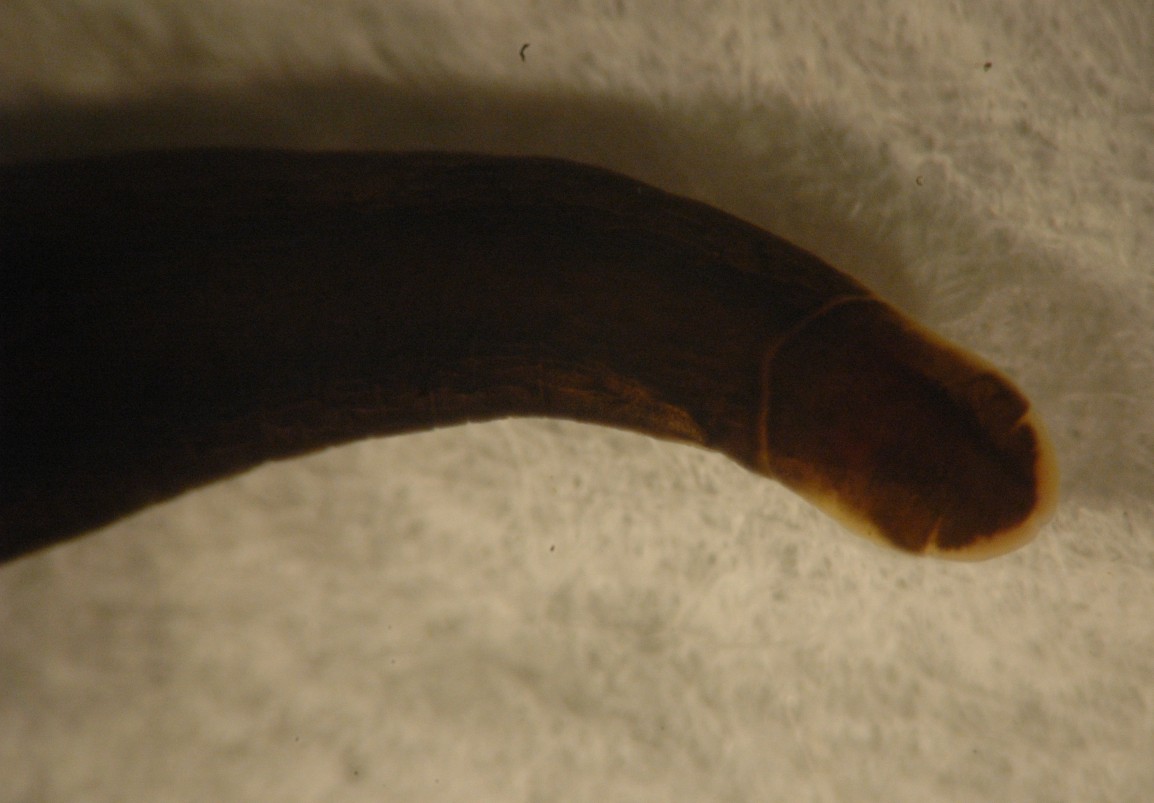
This view of the head shows the lighter colored band along the edge
of the head and across the back of the head. The most
posterior clusters
of ocelli
are near the
posterior end of the band along the border.
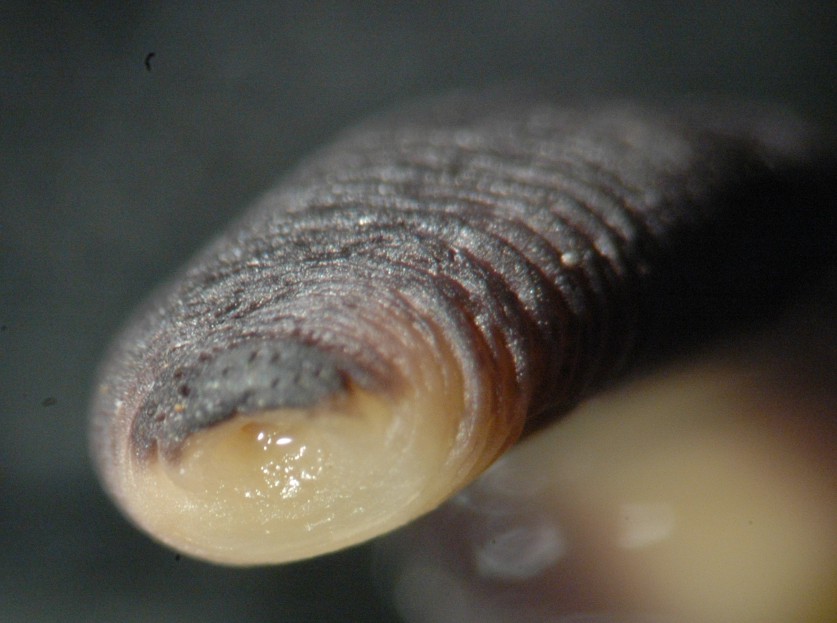
This
view of the front of the head (contracted, alcohol-preserved specimen)
shows the combined mouth and proboscis at the front of the head.
Photo by Dave Cowles, March 2010
Authors and Editors of Page:
Dave Cowles (2009): Created original page
CSS coding for page developed by Jonathan Cowles (2007)
